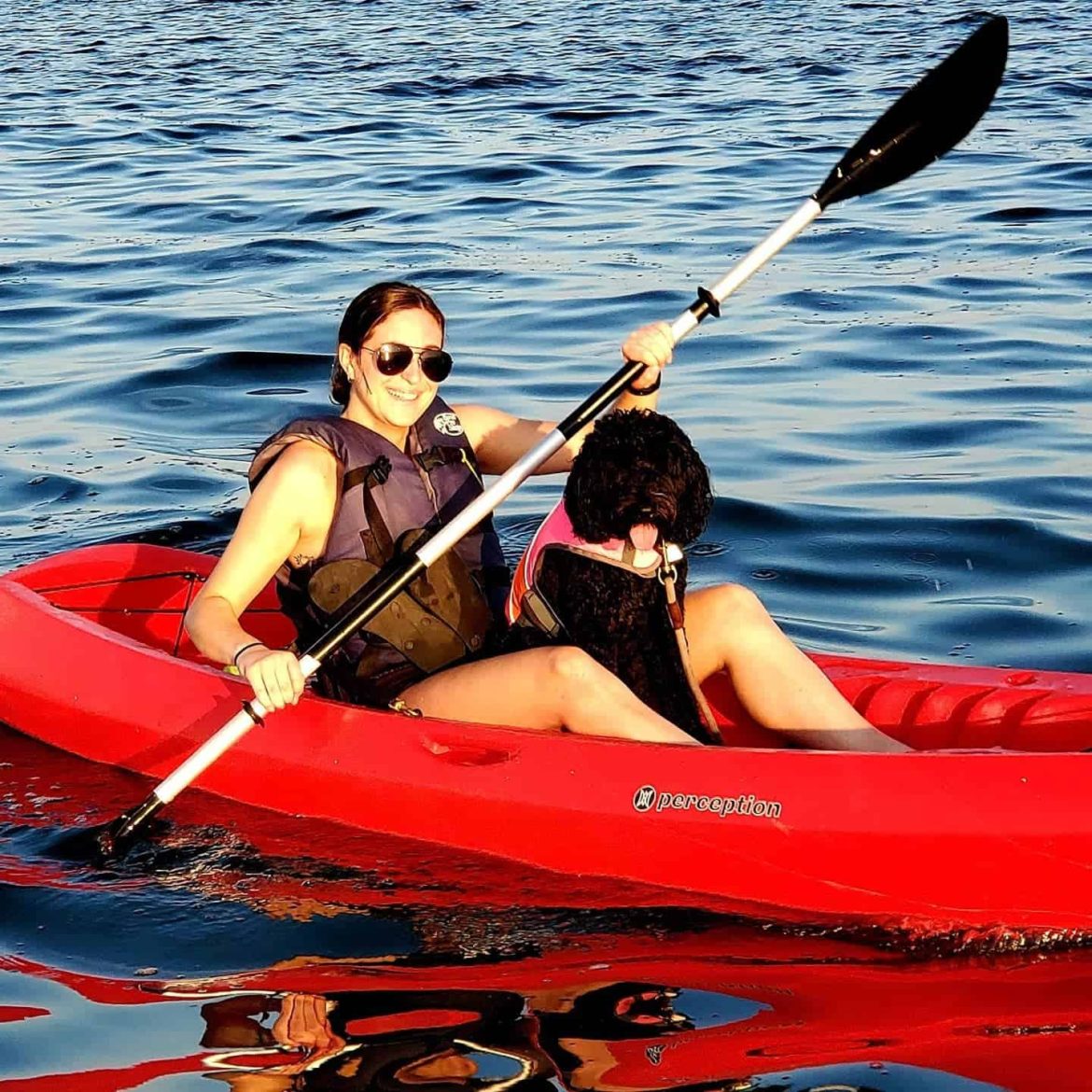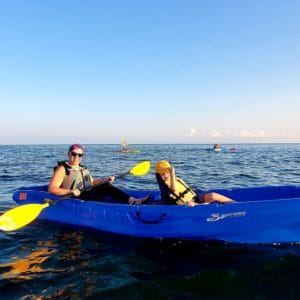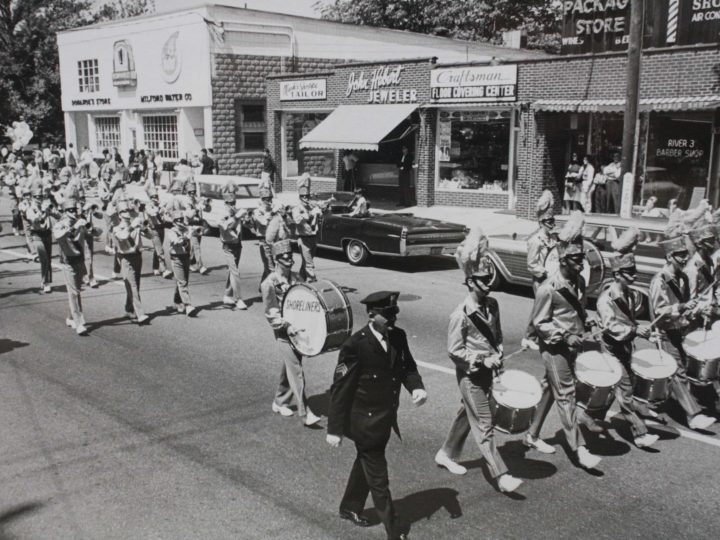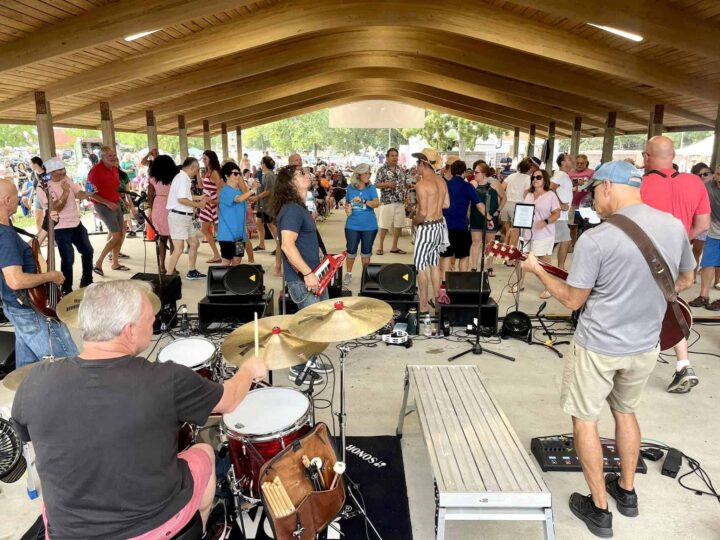
If you have the feeling you’re seeing more kayaks around town, you’re right. According to the American Canoe Association, kayaking is the fastest growing recreational activity on land or water. In a kayak, you can really get away from it all, enjoying sounds, views, and experiences not available to those aboard larger boats. In a kayak, you’re truly close to nature and it enriches your mind, body, and spirit.
The waters around Milford are a great place to kayak. Off the beaches, you can gawk at the lovely waterfront homes or paddle out to Charles Island. You can explore the harbor and watch the boats come and go. When the tide is right, you can sneak into Gulf Pond or venture up the Housatonic to the marshes of the Charles Wheeler Wildlife Management Area and beyond.
If you want to take up the sport, the best way to start is in a recreational kayak. You can buy them new at sporting goods stores and some big box stores, get a used boat, or rent a kayak by the hour or the day at Paddle and Scoot at Walnut Beach.
Recreational kayaks come in single- and two-person variants and are relatively short, wide, and stable. There are two basic varieties: sit-on-top (SOT) and sit-inside. Made of plastic, they can take a beating. Drag them over the sand or drop them off the roof rack and they’ll be fine. Touring kayaks are longer, leaner, faster, more expensive, more delicate, and less stable. It’s said that you don’t sit in a touring kayak, you wear it.
Kayaking is as easy as it looks, but like anything else, there are depths to it. A clean and efficient stroke will let you paddle all day without discomfort. Knowing how to use your paddle as an outrigger will help to keep you stable when those motorboat wakes splash over. You can get some instruction or join a local club to learn the right way to paddle. YouTube also has many helpful videos on kayaking technique.
Whatever kind of kayak you get, it’s important to remember that ending up in the water at some point is part of the sport and you need to be ready for it. It’s not that you’ll capsize often, but when you do, you need to know what to do to stay safe.
Most recreational sit-inside kayaks will fill with water and can sink if not provided with additional flotation in the ends (pool noodles are an inexpensive solution). Additionally, it’s a good idea to have an elastic spray skirt that fits around the cockpit of a sit-inside kayak to keep the water out. These can be hot in the summer, but very helpful when the going gets rough. Climb back in the boat and bail it out (always carry a small pump and sponge in a sit-inside kayak) or swim/tow the kayak to shore where you can tip the water out.
It can be more difficult to sort things out when the water is cold, as it will quickly sap your strength. Dress for the water temperature and not the air temperature; if the water temperature is less than 65 degrees you should wear a wetsuit or a drysuit to avoid being shocked and disabled by the cold water.
Always wear a comfortable lifejacket in a kayak. When buoyed up, you can concentrate on sorting out the situation without having to worry about swimming. You can practice capsizing at the beach, so you know how it feels, how to prevent it, and what to do to get back on track.
No matter where you go, you’ll need a nautical chart. A paper chart can be purchased at a marine store, but many kayakers use a chart app on their phone. The chart (see photo) will show you depths, buoys, landmarks, and hazards to navigation, allowing you to plot a safe trip. Be sure to get a waterproof case for your phone, and tether it to your lifejacket.
The tidal range around Milford is about seven feet, and one of the best things about kayaking is that you need only inches of water to float. The shallow places are the most secluded and where you’ll see the most wildlife. The chart shows green for those areas that are exposed at low tide. When you explore the marshes, make sure you don’t get stuck in the mud; you’ll have to wait hours for the tide to return and lift you out. Figure that you can float over the green areas about three hours before/after low tide. A chart app is especially useful here, as it also provides information about high and low tides, as well as direction and strength of currents.
Currents can be a big factor around Milford, especially if you’re exploring Gulf Pond, Charles Island, or the marshes. You’ll be able to paddle against a knot or two of current (one knot equals 1.1 miles per hour) but will have difficulty in anything more. Tidal current at the mouth of the Housatonic can be five knots or more after a big rain with a falling tide. That requires skill level expert to navigate.
With some basic knowledge, kayaking is both exciting and relaxing for the whole family. You’ll experience the water and the shore in ways you’ve never been able to do before.
—Aimé Fraser
Local launch sites
Looking for the right spot to launch your kayak? Check out these spots:
- Town ramp at Milford Harbor
- Any of the beaches (carry the boat or get a kayak cart)
- Gulf Pond Kayak launch
- Behind the breakwater on the Fort Trumbull side
- State boat launch beneath I-95 in Devon






